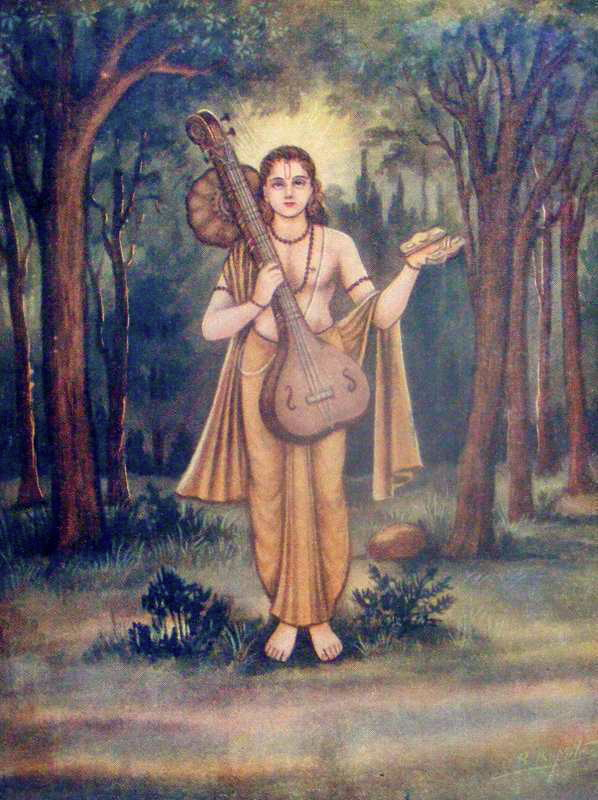|
Matra (music)
In Indian classical music, a Matra is a beat, the smallest rhythmic sub-unit of a tala - the musical meter. It is one of the three levels of structure for tala along with Vibhag (measure) and Avartan (cycle). Retrieved 2016-11-08 The significance of beats depends on their occurrence in a cycle. However, the value of the beats may be stretched or contracted depending on various factors. See also * * Tala * |
Indian Classical Music
Indian classical music is the art music, classical music of the Indian subcontinent. It is generally described using terms like ''Shastriya Sangeet'' and ''Marg Sangeet''. It has two major traditions: the North Indian classical music known as ''Hindustani classical music, Hindustani'' and the South Indian expression known as ''Carnatic classical music, Carnatic''. These traditions were not distinct until about the 15th century. During the period of Mughal Empire, Mughal rule of the Indian subcontinent, the traditions separated and evolved into distinct forms. Hindustani music emphasizes improvisation and exploration of all aspects of a raga, while Carnatic performances tend to be short composition-based. However, the two systems continue to have more common features than differences. Another unique classical music tradition from the eastern part of India is ''Odissi music'', which has evolved over the last two thousand years. The roots of the classical music of India are found ... [...More Info...] [...Related Items...] OR: [Wikipedia] [Google] [Baidu] |
Tala (music)
A tala (IAST ''tāla'') literally means a 'clap, tapping one's hand on one's arm, a musical measure'. It is the term used in Indian classical music similar to Metre (music), musical meter, that is any rhythmic beat or strike that measures musical time. The measure is typically established by hand clapping, waving, touching fingers on thigh or the other hand, verbally, striking of small cymbals, or a percussion instrument in the Indian subcontinental traditions. Along with ''raga'' which forms the fabric of a melodic structure, the ''tala'' forms the life cycle and thereby constitutes one of the two foundational elements of Indian music. ''Tala'' is an ancient music concept traceable to Vedas, Vedic era texts of Hinduism, such as the ''Samaveda'' and methods for singing the Vedic hymns. The music traditions of the North and South India, particularly the ''raga'' and ''tala'' systems, were not considered as distinct until about the 16th century. There on, during the tumultuous ... [...More Info...] [...Related Items...] OR: [Wikipedia] [Google] [Baidu] |
Vibhag
'Vibhag' (in music) represents a duration of rhythmic phrasing in Indian classical music made up of a certain number of beats. They are the rough equivalent of bars in western music, but instead of always being equal subdivisions of the tala (the rhythmic cycle - think 12 bar blues), they can be uneven. In certain traditions of talas in Tabla or in any other percussion instrument in classical music have Vibhagas to get a track of the beats on Matra (music)">Matras on which the singer or player is singing or playing on. For example taking different talas, Tala Teental has 16 matras in it. It has 4 Vibhags. So Teental with Vibhags is written as This can also be shown using the following figure If you see both the tables then you may realize that after every 4 syllables i.e. considering the 1st line so Dha Dhin Dhin Dha after this is a line like this , . This is the symbol of Vibhag. And after the 4 syllables Dha Dhin Dhin Dha is the Vibhag. Now it is simple Maths that if ther ... [...More Info...] [...Related Items...] OR: [Wikipedia] [Google] [Baidu] |
Hindustani Classical Music
Hindustani classical music is the Indian classical music, classical music of the Indian subcontinent's northern regions. It may also be called North Indian classical music or ''Uttar Bhartiya shastriya sangeet''. The term ''shastriya sangeet'' literally means classical music, and is also used to refer to Indian classical music in general. It is played on instruments like the veena, sitar and sarod. It diverged in the 12th century Common Era, CE from Carnatic music, the classical tradition of Southern India. While Carnatic music largely uses compositions written in Sanskrit, Telugu language, Telugu, Kannada, Tamil language, Tamil, Malayalam, Hindustani music largely uses compositions written in Hindi, Urdu, Braj Bhasha, Braj, Awadhi language, Avadhi, Bhojpuri language, Bhojpuri, Bengali language, Bengali, Rajasthani languages, Rajasthani, Marathi language, Marathi and Punjabi language, Punjabi. Knowledge of Hindustani classical music is taught through a network of classical musi ... [...More Info...] [...Related Items...] OR: [Wikipedia] [Google] [Baidu] |

